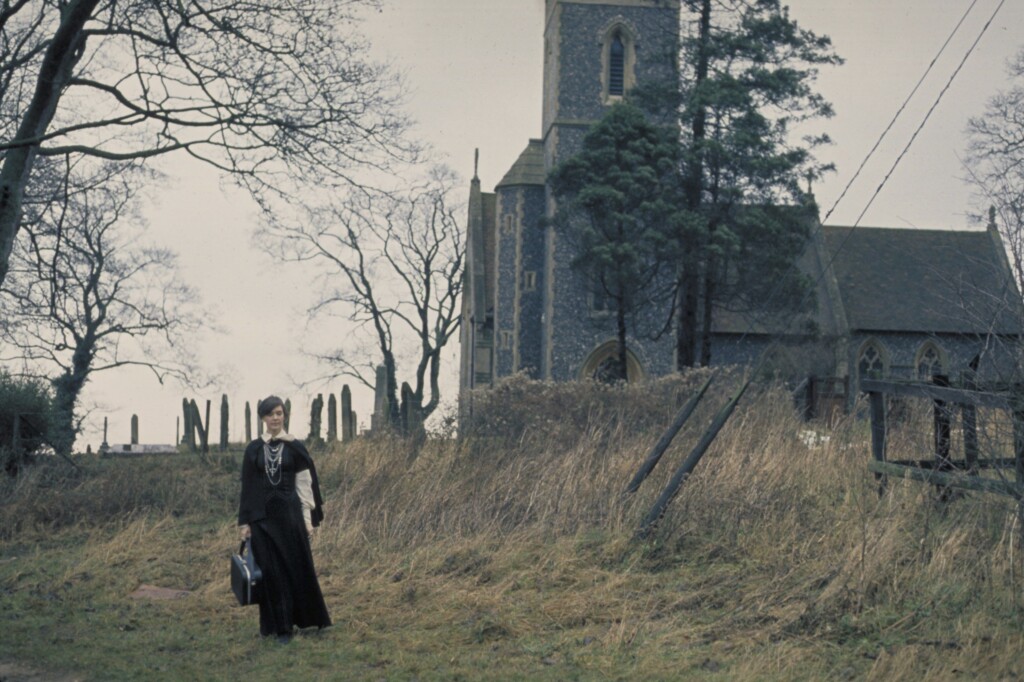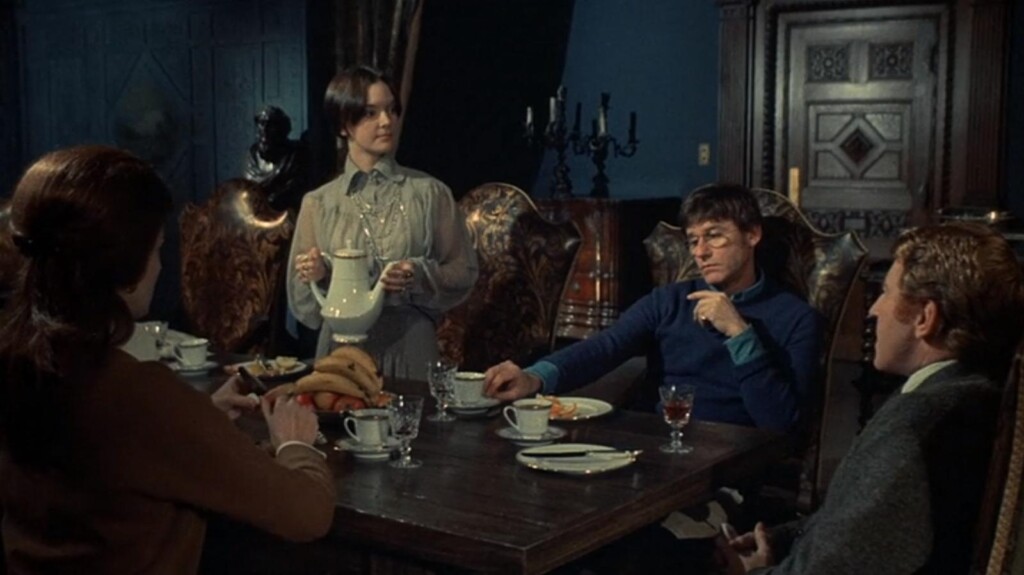“It’s the Mount Everest of haunted houses.”
There’s a nonzero chance that you might not know the name Richard Matheson; he doesn’t come up in conversation as often as he should. Matheson helped define twentieth-century horror with books like I Am Legend and A Stir of Echoes; his story “Nightmare at 20,000 Feet” became one of the earliest and most famous episodes of The Twilight Zone, and his novella Duel was adapted for the big screen by a newcomer named Steven Spielberg. But it’s Hell House that doesn’t get enough credit. It feels like a secret in the horror community. Hell House is a teeth-gnashing guitar solo of horror pulp: violent, sexual, just downright nasty. It’s one of the most transgressive, and, yes, frightening books ever written, and if you haven’t done so, I highly recommend you get your hands on a copy.
All that nastiness would not have translated to the big screen, least of all in 1973. But is The Legend of Hell House, adapted by Matheson himself, just a pale imitator of its source material? I’d say it’s more of a companion piece. The movie doesn’t lose all of the novel’s sharp edges, but it does dull them slightly. That’s not a complaint, just an observation. It was inevitable.

What’s nice about The Legend of Hell House is that it wastes no time; it wants to get to the scares right away. The first scene is a conversation that sets up the entire movie, held before we even know anyone’s name. What’s more, it’s taken for granted by everyone that hauntings are real, if unproven. That’s the task put before Dr. Lionel Barrett by a dying millionaire: prove that life continues after death. He and his team are to travel to the Belasco House, affectionately nicknamed “Hell House,” and report their findings within a week. He’s joined by his wife, Ann, as well as a medium named Florence Tanner and another medium named Benjamin Fischer, ominously introduced as the sole survivor of the last investigation into Belasco House, twenty years prior.
The house itself is something of a marvel. Any giant Gothic manse has some of Shirley Jackson in its DNA, but The Legend of Hell House sets itself apart from traditional Gothic fare through the sheer force of its colors. This film has more Dario Argento in its DNA than it does Jackson (similarly-named houses notwithstanding). Florence, for instance, takes up in a room the lurid red of stage blood, and it makes for a striking image every time it’s on screen.

So it looks good, but how does it run? As with a lot of older horror movies, the performances run the gamut, although no one here is strictly speaking “bad.” Clive Revill, as Lionel Barrett, is probably the stiffest, but it’s hard to tell if that’s because of the actor or the nature of the character. As Ben, Roddy McDowall has more to play with, and although Ben keeps to himself for much of the film, when he opens up near the end, McDowall is able to fully embody every aspect of Ben that was kept hidden. As Ann, Gayle Hunnicutt has a lot to do, and handles it nicely. She’s not just a stock wife character, especially as she’s grappling with some latent lesbian urges. Which brings us to Florence, played by Pamela Franklin in the film’s best performance. Florence opens herself to the house immediately, believing it to be haunted by Daniel Belasco, the secret son of the owner of the house. She gets the majority of the heavy lifting, as the most vulnerable yet confident member of the makeshift team. Beyond that, the electronic score, by Delia Derbyshire and Brian Hodgson, is a wildly unconventional choice for a horror film of this era and this setting.
The Legend of Hell House is a solid, if occasionally underwhelming, horror film. It’s missed cult status, likely because its source material is itself a cult classic. If anything, the film is a good primer for Matheson’s book: if you enjoy this (accurate, but softened) adaptation, but want something a little heavier, go seek out Hell House. But don’t say I didn’t warn you.
Thursday, 10/1: Phantasm
Friday, 10/2: Frozen
Saturday, 10/3: Suspiria
Sunday, 10/4: Suspiria (2018)
Monday, 10/5: Emelie
Tuesday, 10/6: Castle Freak
Wednesday, 10/7: Session 9
Thursday, 10/8: The Texas Chainsaw Massacre 2
Friday, 10/9: We Are Still Here
Saturday, 10/10: The Changeling
Sunday, 10/11: The Bad Seed
Monday, 10/12: Verotika
Tuesday, 10/13: The Legend of Hell House
Wednesday, 10/14: Lake Mungo
Thursday, 10/15: Puppetmaster
Friday, 10/16: Marrowbone
Saturday, 10/17: A Nightmare on Elm Street 4: The Dream Master
Sunday, 10/18: Halloween 4: The Return of Michael Myers
Monday, 10/19: Sweetheart
Tuesday, 10/20: Girl On the Third Floor
Wednesday, 10/21: Behind the Mask: The Rise of Leslie Vernon
Thursday, 10/22: Triangle
Friday, 10/23: Dog Soldiers
Saturday, 10/24: Noroi: The Curse
Sunday, 10/25: Train to Busan
Monday, 10/26: Tales From the Hood
Tuesday, 10/27: Mandy
Wednesday, 10/28: Sometimes They Come Back
Thursday, 10/29: Veronica
Friday, 10/30: The Wicker Man
Saturday, 10/31: Child’s Play

